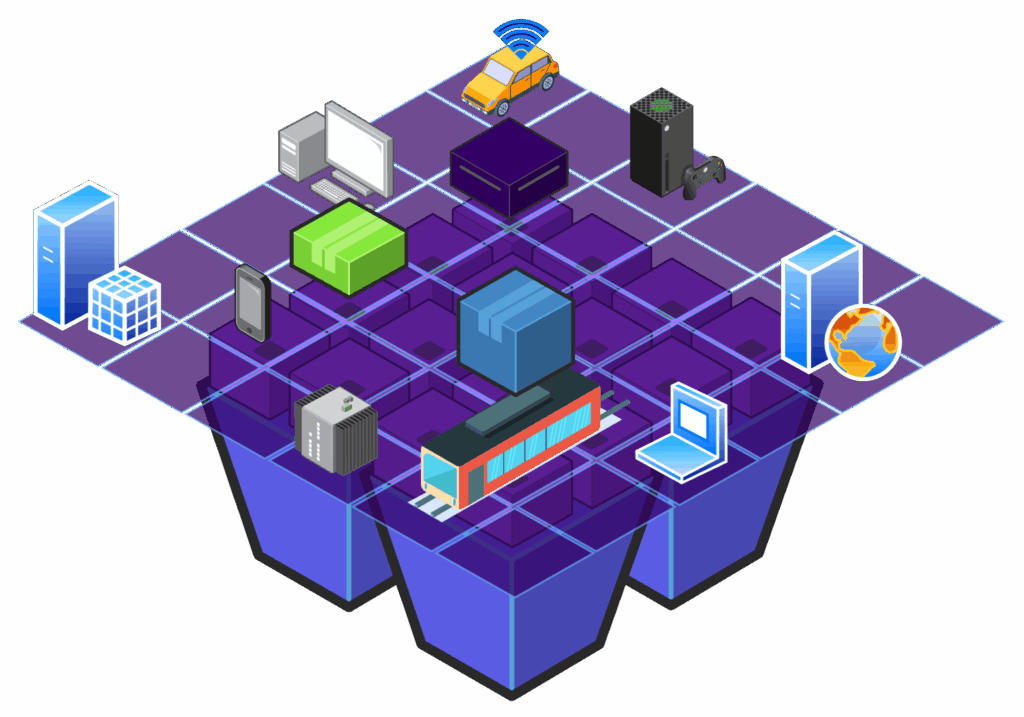The internet wasn’t designed for what it’s become. It was built for openness, not security. For connectivity, not control. Today, we live in a world where sensitive data moves across infrastructure that wasn’t meant to protect it. Entire businesses depend on workarounds—VPNs, firewalls, ZTNA, and layered security tools—to patch over design flaws that go right down to the foundation.
At Defiant Networks, we believe that patching the old model isn’t enough. It’s time to replace it.
Who We Are
We’re a team of engineers, cybersecurity veterans, and infrastructure experts who’ve spent decades at the intersection of networking and defense. We’ve seen how fragile the current internet is—how easy it is to breach, how hard it is to trust, and how costly it is to secure.
Our mission is to create a new standard of communication: a trustless overlay network that replaces assumptions with cryptographic proof, and that makes privacy and security native—not optional.
What We Do
Defiant Networks is building a secure, high-performance, certificate-free overlay network for modern internet communications. This isn’t another VPN. It isn’t just access control. It’s a new layer on top of the internet—LiteNet—that redefines how machines and people connect:
- No exposed service ports
- Built-in mutual authentication
- No TLS certificate headaches
- Decentralized name resolution and routing
- Minimal attack surface by default
LiteNet integrates naturally with existing infrastructure, but replaces the fragile assumptions of IP networking with verifiable, identity-based communication.
What’s Wrong with the Internet We Have?
The problems with the current internet are structural:
- Implicit trust: Devices and services are reachable by default. Firewalls and ACLs are needed just to create basic boundaries.
- IP addresses as identity: A system based on “where” instead of “who” leads to spoofing, lateral movement, and a constant game of whack-a-mole.
- Overexposure: The moment a service is online, it’s globally reachable unless manually hidden. Attackers can discover and probe it 24/7.
- Outdated PKI: Certificate-based TLS is burdensome, centralized, and vulnerable to misissuance, compromise, and expiration.
- The DNS bottleneck: The Domain Name System is a global directory with a single point of failure. It was never meant to be a gatekeeper, yet that’s exactly what it has become. DNS relies on a centralized hierarchy—ICANN, registrars, root servers—that can revoke, redirect, or censor domains at any time. This infrastructure introduces friction, cost, surveillance, and the ability to silence voices or shut down services arbitrarily.
- Security through layers: Instead of secure-by-design, we rely on stacks of tools—each with their own cost, complexity, and weaknesses.
The result is a system that’s expensive to defend, easy to break, and hard to scale securely.
Why VPNs and ZTNA Fall Short
VPNs were never meant to scale to millions of users and devices. They extend private networks across public infrastructure, but they do it by tunneling insecure assumptions through a new channel. They introduce latency, bottlenecks, and a single point of failure.
ZTNA (Zero Trust Network Access) is an improvement—but it’s still layered on top of a broken model. It requires deep integration with identity providers, complex policy engines, and meticulous network mapping. And it often relies on the very same transport and discovery mechanisms (DNS, IP routing, TLS) that attackers exploit.
Both are necessary today—but they’re still duct tape on legacy plumbing.
What We’re Building Is the Evolution

At Defiant Networks, we’re not layering more tools on the old model—we’re replacing the model itself. We’re creating a world where:
- Services don’t need to be “hidden” because they’re never exposed in the first place.
- Communication is based on identity, not IP address.
- Sessions are encrypted by default without needing a central certificate authority.
- Attack surfaces are minimal and not discoverable by default.
- The rules of access and trust are embedded into the network itself—not bolted on afterward.
This is more than Zero Trust. It’s trustless by design.
What’s Next
In the coming weeks, we’ll be sharing technical deep dives, architecture previews, and open discussions around what the future of secure networking should look like. Our goal isn’t just to build a product—it’s to help shift how the internet itself is understood and architected.
We believe a better internet is possible. One that’s secure without compromise. Private by default. Resilient by design.
We’re Defiant Networks—and we’re building it.st post. Edit or delete it, then start writing!


One response to “The Internet Is Broken. We’re Rebuilding It.”
Hi, this is a comment.
To get started with moderating, editing, and deleting comments, please visit the Comments screen in the dashboard.
Commenter avatars come from Gravatar.